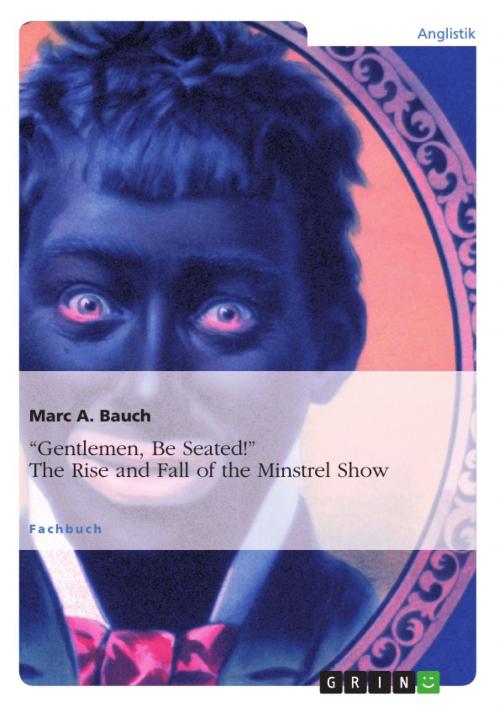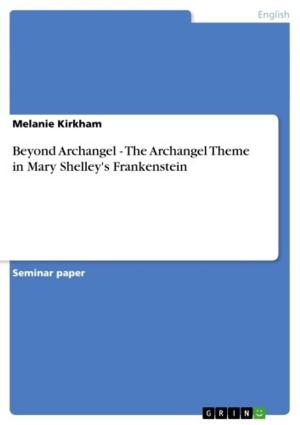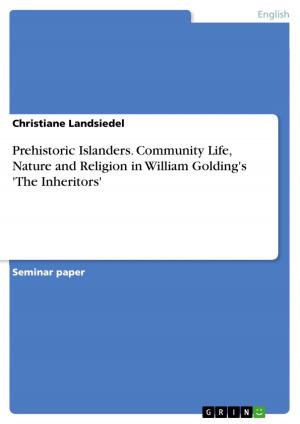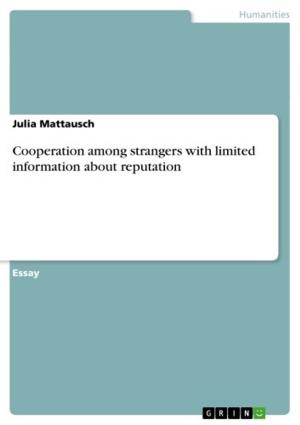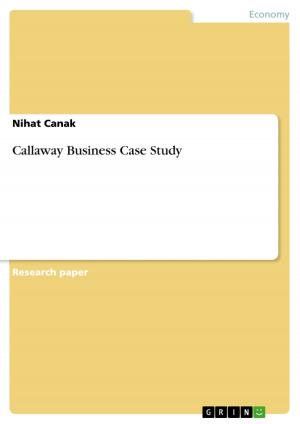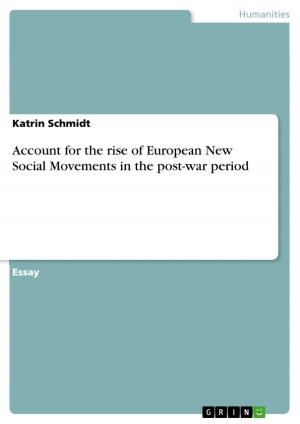'Gentlemen, Be Seated!' The Rise and Fall of the Minstrel Show
The Rise and the Fall of the Minstrel Show
Nonfiction, Entertainment, Drama, Anthologies| Author: | Marc A. Bauch | ISBN: | 9783656086567 |
| Publisher: | GRIN Publishing | Publication: | December 20, 2011 |
| Imprint: | GRIN Publishing | Language: | English |
| Author: | Marc A. Bauch |
| ISBN: | 9783656086567 |
| Publisher: | GRIN Publishing |
| Publication: | December 20, 2011 |
| Imprint: | GRIN Publishing |
| Language: | English |
Document from the year 2011 in the subject American Studies - Literature, grade: --, Saarland University (Amerikanistik), language: English, abstract: A native form of entertainment that came up in around 1843 was the minstrel show. The minstrel show was a show that consisted of melodies by slaves and jokes by white actors in blackface in order to imitate the blacks. Led by Mr. Interlocutor, the master of ceremonies, three more actors in blackface sat in a semicircle. The endmen or cornermen were known as Mr. Bones and Mr. Tambo, who joked together or made fun of slaves. Thus, the minstrel show was double-edged: on the one hand, racism in the United States was reinforced; on the other hand, so many white Americans have become aware of black popular culture. No wonder therefore, the rise of the minstrel show coincided with the growth of the abolitionist movement in the 19th century. But without doubt, racial discrimination was played down in the minstrel show. The minstrel show was meant as a form of entertainment, which was not intended to be taken seriously. Although the minstrel aimed to create a native and distinctly American form of entertainment, the songs they adopted were of English, Irish or Scottish origin. Furthermore, they presented parodies of European-style entertainment or parodied works by William Shakespeare. The book gives an overview of the history of the minstrel show. Marc A. Bauch is a scholar of American Literature and has specialized in American Theater, including the American Musical.
Document from the year 2011 in the subject American Studies - Literature, grade: --, Saarland University (Amerikanistik), language: English, abstract: A native form of entertainment that came up in around 1843 was the minstrel show. The minstrel show was a show that consisted of melodies by slaves and jokes by white actors in blackface in order to imitate the blacks. Led by Mr. Interlocutor, the master of ceremonies, three more actors in blackface sat in a semicircle. The endmen or cornermen were known as Mr. Bones and Mr. Tambo, who joked together or made fun of slaves. Thus, the minstrel show was double-edged: on the one hand, racism in the United States was reinforced; on the other hand, so many white Americans have become aware of black popular culture. No wonder therefore, the rise of the minstrel show coincided with the growth of the abolitionist movement in the 19th century. But without doubt, racial discrimination was played down in the minstrel show. The minstrel show was meant as a form of entertainment, which was not intended to be taken seriously. Although the minstrel aimed to create a native and distinctly American form of entertainment, the songs they adopted were of English, Irish or Scottish origin. Furthermore, they presented parodies of European-style entertainment or parodied works by William Shakespeare. The book gives an overview of the history of the minstrel show. Marc A. Bauch is a scholar of American Literature and has specialized in American Theater, including the American Musical.
